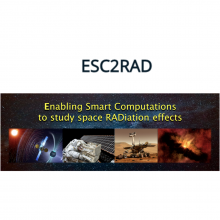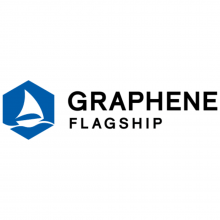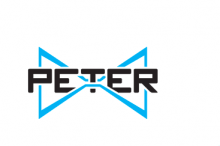Projects at a Glance
ANTHEM - AdvaNced THErmoelectric Materials through Vapor Phase Infiltration
Waste heat—the rejected by-product of all energy conversion processes—remains a huge and unexplored reservoir of green energy. It is estimated that two-thirds of the 160 TWh required for global power consumption is lost to the environment each year. Converting even a fraction of this wasted energy into electricity at the cost of 10 cents per kWh would generate a new EUR 1.0 trillion industry—creating jobs, boosting the economy, and increasing energy efficiency.
R-I PEERS- Pilot experiences for improving gender equality in research organisations
The R&I PEERS project will be based on the concept of gender equality, that can be expressed as “women and men enjoy the same status and have equal opportunity to realize their full human rights and potential to contribute to national, political, economic, social and cultural development, and to benefit from the results”.QuESTech - QUantum Electronics Science and TECHnology training
QuESTech (Project ID: 766025) is a consortium of 7 leading European research laboratories and 2 high-tech companies. Supported by the European Community, QuESTech will provide a challenging, state-of-the-art training for young researchers in the general field of experimental, applied, and theoretical quantum electronics. The main scientific topics include spintronics, molecular electronics, single electronics, transport in low-dimensional structures, and quantum thermodynamics.PETER-Plasmon Enhanced Terahertz Electron Paramagnetic Resonance
We propose to establish Plasmon -enhanced Terahertz Electron Paramagnetic Resonance spectroscopy and scanning microscopy as a unique Electron Paramagnetic Resonance (EPR) platform for high-sensitivity local analysis of paramagnetic organic and inorganic species and materials. Here, we will deliver novel hardware and infrastructure providing ground-breaking innovation in the magnetic sensing and imaging.NS-PC - New frontier of nano-space using protein crystals for telecommunication and medical applications
Nano-spaces based on organic molecules, including porous coordination polymers and metal-organic frameworks (PCP/MOF), find applications in storage, separation, and transport. Protein crystals offer larger nano-spaces (4.5-100 nm) and biocompatibility. The NS-PC project focuses on synthesizing, characterizing, and applying protein crystals, utilizing cage-shaped proteins to confine organic molecules or nanoparticles. Peptide-functionalized proteins enable crystalization through conventional and gene-engineered methods, forming binary or ternary protein crystals. These crystals could serve as containers for molecules or scaffolds for nanostructures. Protein crystals are proposed for developing periodic magnetic nanostructures, aiding magnon physics and microwave device innovation. Biocompatibility opens avenues for drug delivery and imaging agents, potentially revolutionizing healthcare with larger-capacity carriers. The project bridges fundamental research and practical applications.
By funding program
Contacto

Yurdana Castelruiz
Projects Manager
+ 34 943574022
y.castelruiz[at]nanogune.eu







